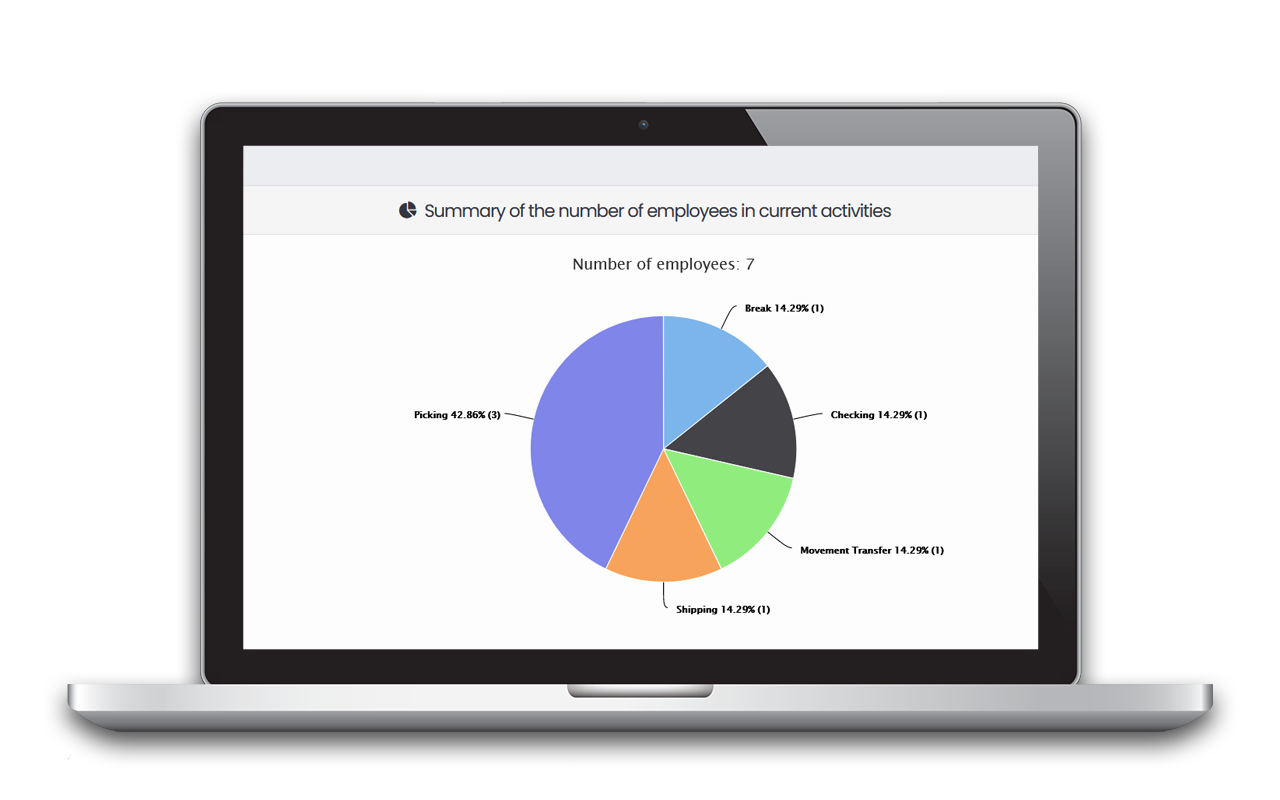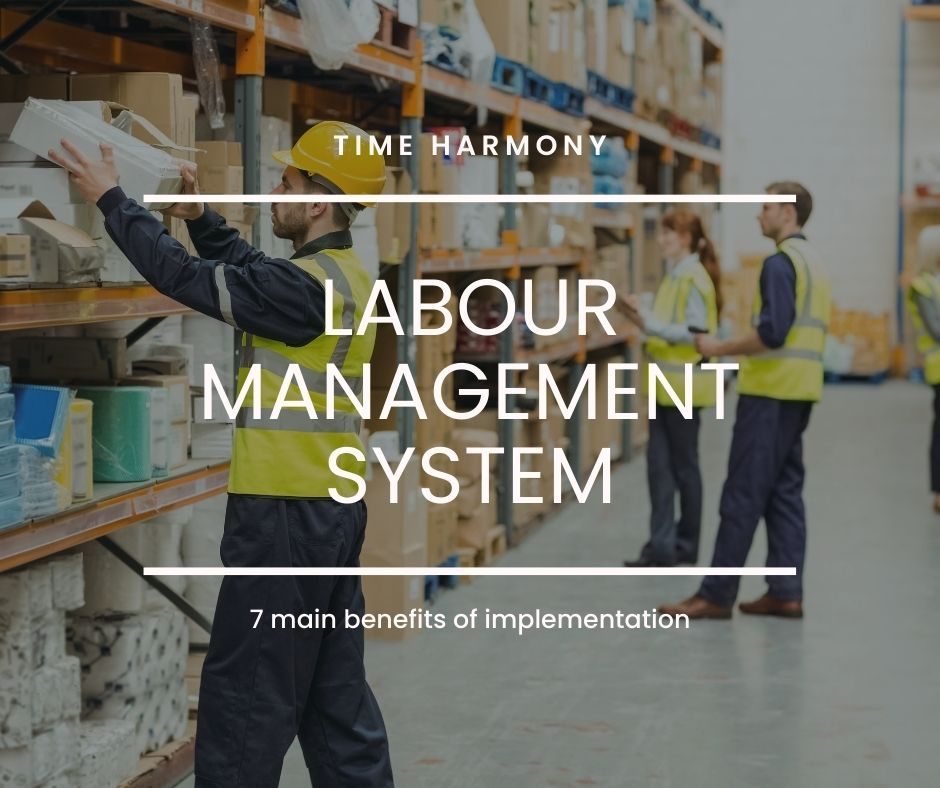In the era of high competition and rising operating costs, logistics companies must build their market advantage on the basis of optimization activities and management based on measurable data.
Time Harmony –Labour Management System (LMS)
Time Harmony, a Labour Management (LMS) class system, is a tool that provides data on working time, activities performed and employee performance.
In this article, we will analyze the most important benefits that we know of from implementing an LMS system in logistics and manufacturing companies.
1. Employee motivation and identification of potential leaders
The system provides measurable data on the employee's performance and punctuality, which can be used by superiors as a basis for providing feedback on the quality of work performed. Employees who regularly receive feedback from their superiors are 18-23% more productive than those who do not. Measurable, objective data recorded by the system can also be taken into account in the bonus process, giving employees a sense of fairness and agency and thus increasing employee motivation. In addition, the analysis of performance results allows to identify people with high potential. This is valuable information for the process of human resources development and planning of the career path and succession.
2. Increase in productivity
Our Labour Management System enables the employee and their leader to have continuous visibility into performance data. The data is anonymised and thus inaccessible to unauthorised persons. On the one hand, the system guarantees transparency of information, and on the other hand, it ensures 100% information security. By gaining access to performance data, employees can adjust the pace and quality of their work accordingly, which will translate into a high performance rating and thus lead to an increase in productivity and the speed of order completion.
3. Tracking of warehouse and production processes
People responsible for warehouse work or production supervision gain real-time insight into the execution of orders. Time Harmony provides real-time data on ongoing processes, the degree of their implementation, along with the determination of the efficiency of the process and the date of its completion. This gives you the opportunity to have a real impact on the course of processes, providing data for effective staffing planning or making the necessary transfers between teams to ensure timely completion of the order
4. Effective work planning
Time Harmony allows to plan work quickly and efficiently. In addition, an new functionality will be put into use in the near future, allowing for the analysis of the introduced work schedule in terms of the production plan for key processes. On the basis of the performance data, the system will suggest whether the scheduled workers will be able to complete the required production. Effective work planning gives the ability to handle changing volumes without the need to schedule overtime or hire additional staff.
5. Labor Cost Reduction
Thanks to the fact that working time and activities are recorded in a system that provides objective data, employees show greater self-control in terms of punctuality or the way they use and frequency of breaks. Improved performance is also noted in the reduction of the time between coming to work or returning from a break and taking the first activity. The fact that the system records the activities performed and the pace of work motivates to maintain a high level of work. On the other hand, employees can be sure that their performance will be measured and recorded for review and analysis, and then taken into account in the remuneration process.
6. Identification of unproductive activities
One of the first, measurable and quickly emerging benefits of implementing the system is a significant reduction in unproductive (idle) activities. In most of the warehouse centers we are familiar with, WMS systems provide data on system activities, recorded by employees using scanners. Meanwhile, about 30% of the total working time is made up of non-system activities, not recorded in the WMS system. This includes non-systemic – productive activities (related to the process and cannot be eliminated), such as cleaning work, meetings, wrapping, foiling, etc. and non-systemic activities - unproductive (idle) such as breaks or the time between coming to work or returning from a break and taking the first activity. Thanks to the use of a tool that also measures such activities, it is possible to reduce their number very quickly and recover a large amount of time. And that translates into really big savings. Check how our Labour Management System measures non - systemic activities.
7. Data for Process Analysis and Optimization
In addition to real-time data showing the course of work, which is invaluable in ongoing monitoring of the course of processes, Time Harmony also provides data for selected periods (previous day, week, month, etc.) in the form of reports, which can also be sent to indicated e-mail addresses. On the basis of the available reports, it is possible to track in detail all data related to the work of the employed staff (regardless of the type of contract concluded with employees), i.e. productivity, share of non-system activities in the total working time, number of units performed in a given time, involvement in specific activities, use of breaks, working time, attendance list, used holidays and available limits.
The system gives the ability to analyze the data against a number of desired criteria. Depending on the degree of granularity, the data can be analyzed for a given location, comparatively between locations, per project, per client for whom the order is carried out.
The knowledge available to managers on the basis of the data provided by the system can be used for optimization activities, such as reducing unproductive activities identified within processes, duplicating good practices based on data from high-performance locations, correcting process elements that show lower efficiency or the need for additional training of employees in specific activities.
Summary
The benefits listed above certainly do not exhaust the catalogue of all possible benefits resulting from the implementation of the system. We ourselves are sometimes surprised by our clients when we receive feedback on how Time Harmony has contributed to the improvement of work processes and cost reduction in their organization. And because we are very happy about such news, we are working with passion and commitment to further develop our system 😊

Optimize working time and efficiency of your team

